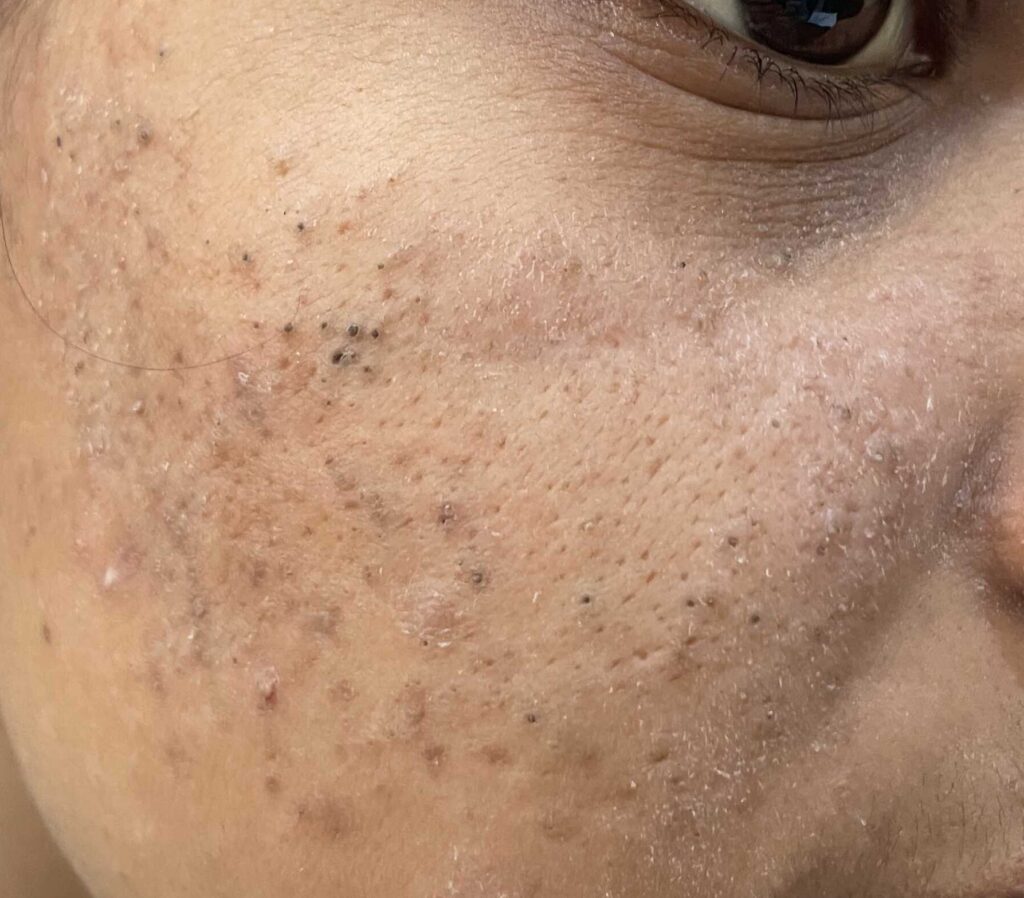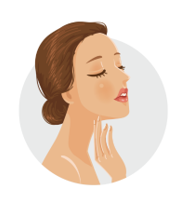6 Best Acne products that you should try I Dermatologist Pick
August 2, 2022 2024-12-11 8:136 Best Acne products that you should try I Dermatologist Pick
As an Amazon associate, Dermatocare earns from valid purchase made by clicking on the affiliate links in this blog.

6 Best Acne products that you should try I Dermatologist Pick
“Doctor, what are the best dermatologist-recommended acne ingredients and products?”
Before diving into anti-acne strategies, it’s important to first identify the type of acne you have, as each variant requires different treatments. Let’s break down your journey to finding the best anti-acne products into three key steps: determining your acne type, exploring allopathic anti-acne ingredients, and discovering herbs with anti-acne properties. At the end, we’ll list the top products you should try to help fade those zits and prevent acne scars.
Types of acne
Acne typically presents in three forms: comedones (blackheads and whiteheads), red or pus-filled pimples, and cystic lesions. As a result, dermatologists recommend different products based on the type of acne you’re dealing with.
1. Comedones (Blackheads/whiteheads)

Comedones occur because of uncontrolled oil secretions, thick occlusive creams, or multiple layering of products. As a result, the openings of your oil glands get blocked by cellular debris, leading to black and whiteheads, dermatologically termed comedones.
2. Red or Pus filled Pimples

Red and pus-filled pimples occur due to over-growth bacteria called Propionibacterium acnes in the clogged pores. In such cases, antiseptic and anti-inflammatory agents like neem, tea tree oil, licorice, and niacinamide might help.
3. Cystic or Nodular acne

When the battle between your defense mechanism and bacteria continues unchecked, small red pimples might grow into big nodules or cysts. In this case, it is highly recommended to begin treatment under a dermatologist immediately to avoid the formation of scars after healing.
4. Post Acne scars

Acne can heal leaving 6 type of acne scars, which further need specific treatments as discussed in this article, 6 Type of acne scars
List of anti-acne ingredients recommended by dermatologist
Acne, a common skin condition, can be frustrating and persistent. However, with the right ingredients, you can effectively combat breakouts and achieve clearer skin. Here’s a breakdown of some of the most effective anti-acne ingredients:
1. Benzoyl Peroxide
- How it works: Kills bacteria that contribute to acne.
- Benefits: Reduces inflammation, prevents future breakouts.
- Best for: Red or pus filled acne
2. Salicylic Acid
- How it works: Exfoliates the skin, unclogs pores, and reduces inflammation.
- Benefits: Effective for blackheads and whiteheads, especially for oily skin.
- Best for: Comedonal acne.
3. Retinoids– Adapalene/tretinoin
- How it works: Increases cell turnover, reduces oil production, and unclogs pores.
- Benefits: Improves overall skin texture and reduces the appearance of acne scars.
- Best for: Inflammatory acne and acne scars.
4. Azelaic Acid
- How it works: Reduces bacteria, inflammation, and hyperpigmentation.
- Benefits: Suitable for sensitive skin, effective for both inflammatory and non-inflammatory acne.
- Best for: Inflammatory acne, especially for those with rosacea.
5. Niacinamide
- How it works: Reduces inflammation, regulates oil production, and improves skin barrier function.
- Benefits: Soothes irritated skin and helps prevent future breakouts.
- Best for: Acne-prone Sensitive skin
6. Alpha Hydroxy Acids (AHAs)
- How it works: Exfoliates the skin’s surface, removes dead skin cells, and improves skin texture.
- Benefits: Can help reduce the appearance of acne scars and hyperpigmentation.
- Best for: Mild acne and those with dry or normal skin.
6. Clindamycin
- How it works: Inhits growth acne-causing bacteria
- Benefits: Can help reduce the appearance of red and pus filled pimples
- Best for: Red or pus filled acne
List of Herbs with anti-acne action
1. Achyranthes aspera
- Part used: Leaves
- Efficacy: Inhibits Epstein-Barr virus and acts as an anti-tumor promoter.
- Mechanism: Contains saponin, alkaloids, and non-alkaloid fractions with anti-inflammatory and anti-carcinogenic properties.
2. Allium cepa (Onion)
- Part used: Extract gel
- Efficacy: Improves scar appearance and exhibits antimicrobial activity.
- Mechanism: Effective against acne-related microbes and fungal infections.
3. Azadirachta indica (Neem)
- Part used: Leaves and ethanol extracts
- Efficacy: Inhibits Propionibacterium and Staphylococcus epidermidis.
- Mechanism: Antibacterial and chemopreventive properties.
4. Cannabis sativus (Hemp)
- Part used: Seed oil and leaf powder
- Efficacy: Treats acne rosacea and strengthens skin barrier.
- Mechanism: Antimicrobial, anti-inflammatory, and skin-soothing properties.
5. Echinacea angustifolia and Echinacea purpurea
- Part used: Extracts
- Efficacy: Reduces P. acnes-induced inflammation.
- Mechanism: Antimicrobial and anti-inflammatory, inhibits pro-inflammatory cytokines.
6. Rosmarinus officinalis (Rosemary)
- Part used: Aqueous and essential oil extracts
- Efficacy: Prevents photo damage and inhibits P. acnes.
- Mechanism: Antioxidant and antibacterial activity.
7. Melaleuca alternifolia (Tea Tree)
- Part used: Oil
- Efficacy: Effective against acne bacteria with minimal side effects.
- Mechanism: Disrupts plasma membrane barriers and exhibits anti-inflammatory activity.
8. Eucalyptus species (E. globulus, E. viminalis, E. maculata)
- Part used: Leaves
- Efficacy: Inhibits acne-causing bacteria and fungi.
- Mechanism: Antimicrobial activity targeting P. acnes and other pathogens.
9. Aloe vera
- Part used: Extracts
- Efficacy: Exhibits antibacterial and anti-inflammatory properties.
- Mechanism: Soothes skin, reduces inflammation, and combats bacterial growth.
10. Curcuma longa (Turmeric)
- Part used: Extracts
- Efficacy: Antibacterial and anti-inflammatory.
- Mechanism: Reduces oxidative stress and microbial activity.
11. Camellia sinensis (Green Tea)
- Part used: Polyphenol-rich extracts
- Efficacy: Anti-inflammatory and 5α-reductase inhibitory.
- Mechanism: Reduces sebum production and inflammation.
12. Commiphora mukul (Guggul)
- Part used: Oleoresin
- Efficacy: Antibacterial activity against acne pathogens.
- Mechanism: Reduces acne lesions through anti-inflammatory pathways.
13. Hippophae rhamnoides (Sea Buckthorn)
- Part used: Fruit extract
- Efficacy: Type 1-α reductase inhibition.
- Mechanism: Balances sebum production and provides anti-inflammatory benefits.
14. Vitex negundo
- Part used: Flavonoid extracts
- Efficacy: Antibacterial and anti-inflammatory.
- Mechanism: Antioxidant properties that reduce oxidative stress.
15. Andrographis paniculata
- Part used: Extracts
- Efficacy: Anti-inflammatory and antibacterial properties.
- Mechanism: Combats bacterial growth and reduces inflammation.
16. Salmalia malabarica
- Part used: Extracts
- Efficacy: Anti-inflammatory and anti-androgenic.
- Mechanism: Targets oxidative stress and acne pathogens.
Best Anti-acne products for each acne type
Best products for Black/whiteheads
Salicylic acid
The solution to comedones lies in exfoliating your skin with the help of Salicylic acid. It seeps into the blocked pores, loosens the debris, and reduces black and whiteheads in 2-6 weeks.
Salicylic acid serum can be used for oily skin, open pores, and black/whiteheads once or twice a day based on the skin’s oiliness. Ensure you skip this serum if your skin feels dry. Aim for a normal to the slightly dry feel of skin.
Brand recommendations: Best Salicylic acid serum- Dermatologist Recommended.
Retinol
Once you cross 25, switch to retinol-based anti-aging serum. Retinol delays aging, controls oil secretion, reduces open pores, and gently exfoliates your skin.
Brand recommendation: Best retinol or retinaldehyde cream.
Adapalene or tretinoin
In stubborn cases of comedones, you should visit dermatologists for prescription adapalene or tretinoin gel. Both these are available under prescription in India.
Adapalene gel is available without a prescription in the United States. For brand recommendation custmised to your acne type, try our solution finder tool.
Best product for red pimples(India)
Red and pus-filled pimples occur due to over-growth bacteria called Propionibacterium acnes in the clogged pores. In such cases, antiseptic and anti-inflammatory agents like neem, tea tree oil, licorice, and niacinamide might help.
Mamaearth Tea Tree Spot Gel
This cream can be applied on red pimples at night until they dry. It reduces pimples with tea tree oil’s anti-bacterial action and salicylic acid’s oil-controlling action. It also prevents the development of dark spots after healing with the help of skin lightening and the anti-inflammatory action of licorice.
Spot Patches
Spot patch is a Korean product that has a hydrocolloid dressing. This patch camouflages your pimples and sucks oils from pimples. In addition, Centella Asiatica helps in healing by promoting collagen repair.
Homemade anti-acne spot treatment
You can make your own fresh anti-acne spot remedies for red pimples at home. It reduces big red pimples overnight in non-sensitive skin.
Dr. Sheth’s Neem & Bha Spot Clarifying Serum
It can be used full-face at night to reduce comedones and red pimples. It is a good option for non-sensitive oily skin types. It can reduce clogging pores with the help of salicylic acid and prevent bacteria from growing with the help of neem and tea tree oil.
Chemist at Play Acne Control Face Serum
It has 10 % Azelaic acid and 10% Niacinamide that can reduce inflammation, remove pigmentation and impart an even skin tone.
Best product for red pimples(United States)
Spot Patch
Spot patch is a Korean product that has a hydrocolloid dressing. This patch camouflages your pimples and sucks oils from pimples. In addition, Centella Asiatica helps in healing by promoting collagen repair.
TreeActiv Invisible Acne Spot Treatment
This can be applied on pimples at night in non-sensitive skin. It has 2% Salicylic Acid,Aloe Vera, Peppermint Water & Oil, Tea Tree Oil, Clove Flower Oil, Eucalyptus Oil, Lemon Oil, Grapefruit Seed Oil, Orange Oil, Tamanu Oil and Lemongrass Oil to reduce the pimple.
Touch Benzoyl Peroxide 2.5% Acne Cream
This can be applied on the red or pus-filled pimples at night in non-sensitive skin types.
Sesderma Azelac Ru Liposomal serum
It is worth trying for sensitive acne-prone skin, especially if you have dark spots left after healing pimples.
Consult a dermatologist if:
- All the above cases of acne not showing improvement within one month
- You have many black/whiteheads with many red or pus-filled pimples.
- You have dry or sensitive skin with many pimples
ROUTINE FINDER
Get free dermatologist-recommended regime by choosing your skin or concerns.

FACE

HAIRS

CHILD

BODY






